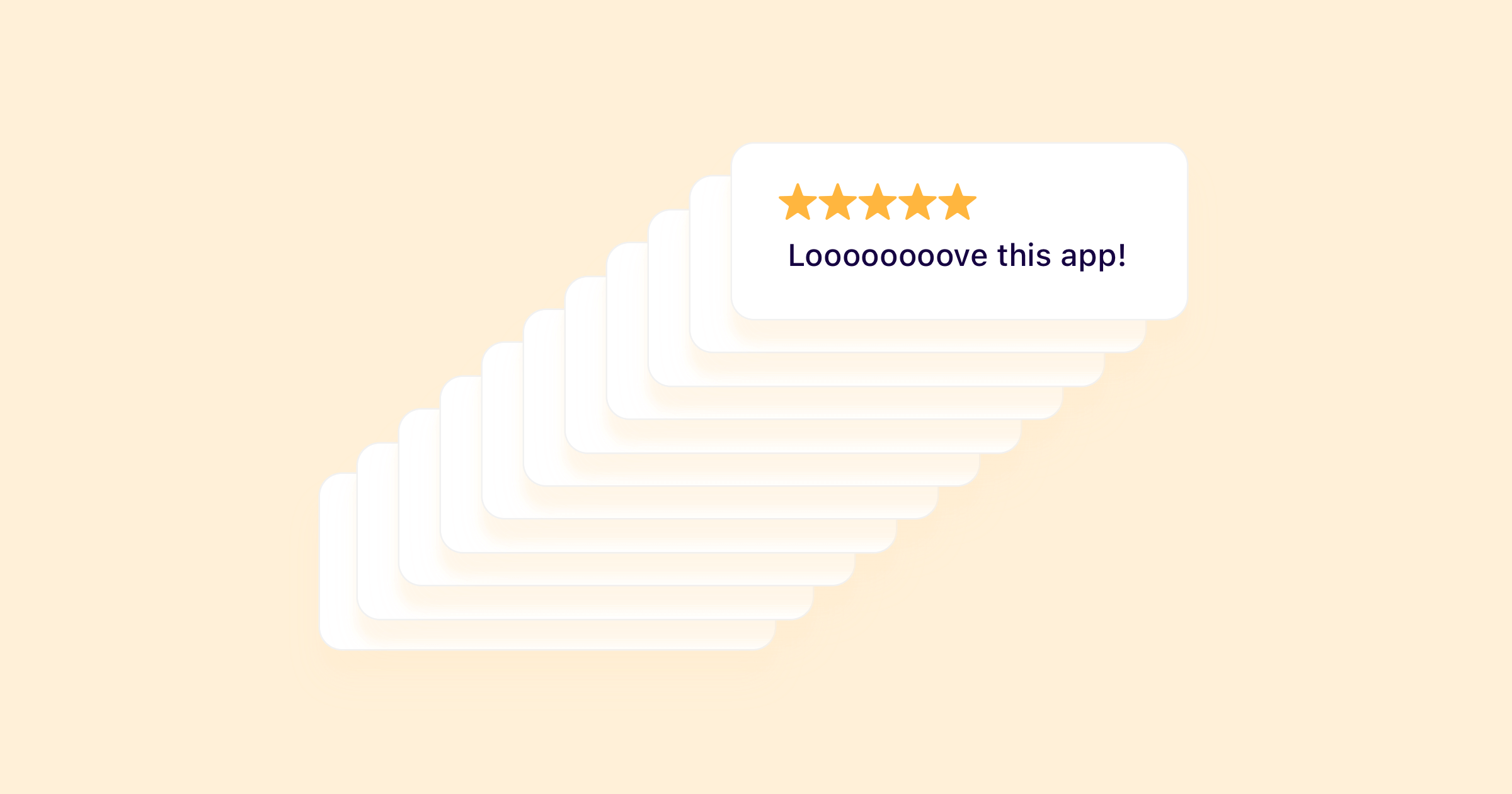What happens when app rating is low?
Published 19th January, 2023 by Estelle Oliveri
When an app has a low rating, it can have a number of negative consequences for both the app developer and the users of the app.
In this guide you'll learn:
- What are the potential impacts of a low app rating?
- What should I do if my app rating is low?
- How can Appbot help?
Want to use customer feedback to level up your app ratings?
Try Appbot free now, no credit card needed →What are the potential impacts of a low app rating?
- Decreased visibility in app stores: App stores often use ratings as a factor in determining the ranking of apps in search results and recommended lists. As a result, a low rating can cause an app to be less visible to potential users.
- Reduced downloads: A low rating can deter users from downloading an app, as they may perceive the app as being of poor quality or not worth their time. This can lead to a decrease in the number of users and revenue for the app.
- Negative user reviews: Low ratings often go hand in hand with negative user reviews, which can further discourage potential users from downloading the app. These reviews can also provide valuable feedback to the app developer, allowing them to identify and fix any issues with the app.
- Decreased user engagement: If users are unhappy with the app, they may not use it as frequently or may stop using it altogether. This can lead to a decrease in user engagement and potentially result in a decrease in revenue for the app.
- Negative impact on the app developer: A low rating can damage the reputation of the app and the app developer, making it harder to attract new users and partners. It can also lead to a decrease in revenue and potentially make it more difficult to secure funding or investment in the future.
Overall, a low app rating can have serious consequences for both the app developer and the users of the app.
What should I do if my app rating is low?
It is important for app developers to actively seek out and address any issues that may be causing low ratings, in order to improve the app and maintain a positive reputation. There are several ways to approach understanding the issues. To start with we recommend the following tactics to address low app ratings:
- Analyze the common themes in your app reviews: This technique uses feedback that you have already collected, so you can be proactive right away. Analyze the text component of your app reviews to look for common themes. Ideally, isolate the reviews with 1 and 2 star ratings, or negative sentiment, and examine those reviews first.
- Dig into your usage analytics: Checking for obvious issues like an up-tick in crashes and errors in your analytics tooling can help you to detect problems in your app that may be frustrating your users and leading to poor ratings.
- User surveys & NPS: If you have any in-app user surveys in place these can be an excellent source of insight into the root causes of low ratings.
- Analyze the text in your support tickets: Unhappy users will often reach out to support. Look for trending themes in your support tickets to see if any causes of poor ratings bubble to the surface.
- Reach out to your social media team: Social media is a place users may go to air their dissatisfaction with your app. Speaking with your social media team to see what themes they are observing in complaints made on your socials can be a great lever in understanding the issue.
How can Appbot help?
Appbot is a tool that can help improve app's rating by providing insights into customer feedback. This app review aggregator can track reviews and ratings across multiple app stores, and provide detailed information about what customers are saying about your app.
This information can help identify areas where your app is falling short, and make changes to improve the overall user experience. Additionally, Appbot can help you monitor your competitors' ratings and reviews, which can give you a better understanding of what is working for them and what you can do to stay competitive.
Want to use customer feedback to level up your app ratings?
Try Appbot free now, no credit card needed →Where to from here?
- Discover effective strategies on how to increase app ratings and improve user satisfaction.
- Uncover powerful techniques to improve app reviews and create a positive user experience.
- Learn the best practices on how to respond to app store reviews and build strong connections with your users.
- Dive into the iOS App Store reviews API to gain deeper insights into user sentiments and optimize your app accordingly.
- Stay informed and in control of your app's reputation with Appbot's comprehensive app review monitoring tool.
About The Author

Estelle leads digital marketing at Appbot where she spends a lot of time analyzing app data and writing about her findings. She also enjoys pina coladas, browsing amazon.com and can do her hair in record time when an unexpected Zoom meeting is dropped on her.
Enjoying the read? You may also like these
 Increase app ratings & improve reviews with replies
Increase app ratings & improve reviews with replies In 2022, 82% of 1 and 2 star reviews are left without a reply. Learn how to take the competitive edge to improve app reviews with fast replies.
5-star review replies should be formed part of the business app reply strategy. Learn what makes up the components of an exceptional 5-star review reply.
Want to learn WHEN to prompt an app review? See our advice after talking to thousands of mobile app developers on best techniques for IOS and Android apps.
Ever since 2013, you could respond to reviews on Google Play. In 2017 Apple followed and gave us the same functionality. But is anyone using it? We dug in to find out.


